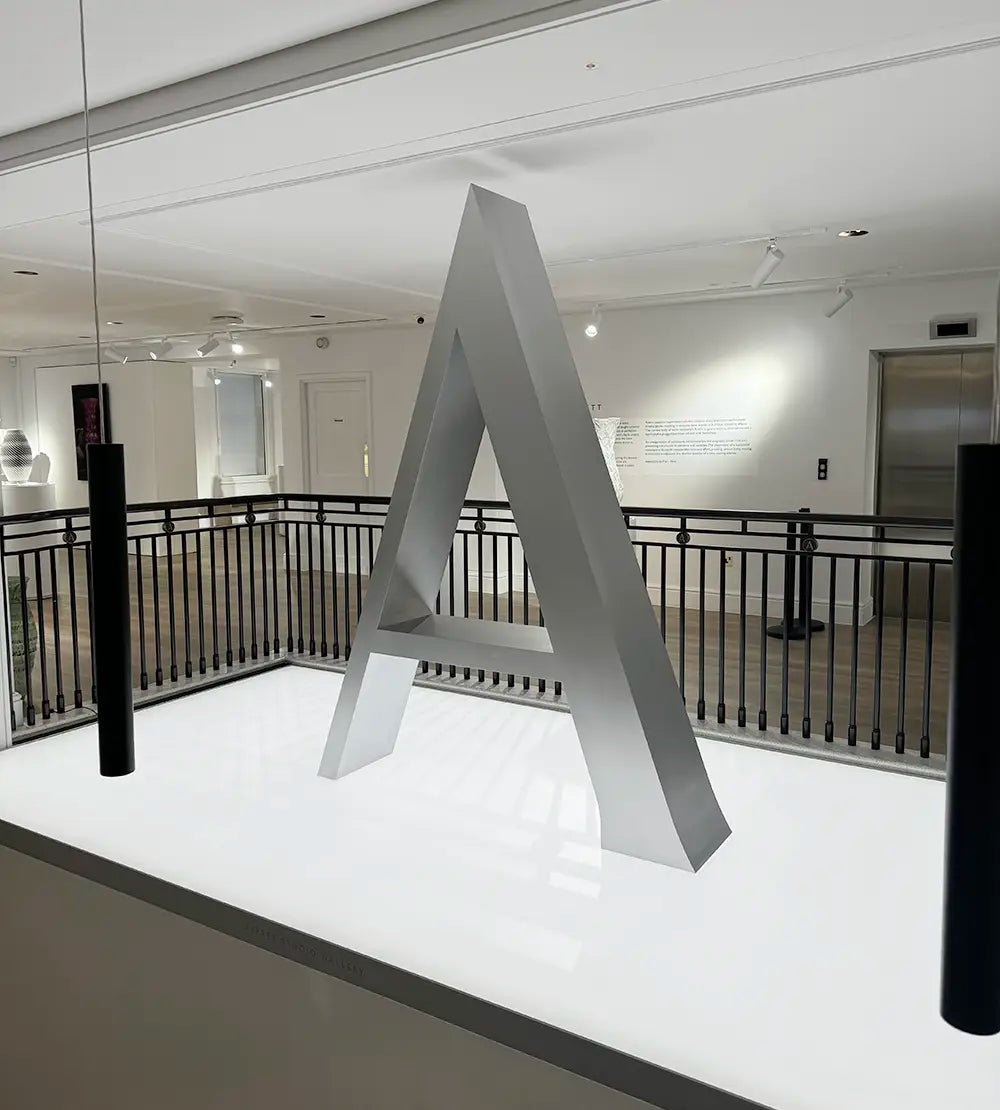By Ali Walker, our Chief Creative Officer and artist of the Asprey Bugatti Egg Collection.
Exceptional art often heralds an interesting story, this one is no exception. During a call with Bugatti, we discussed ideas for our next collection and agreed to create a series that paid homage to the classic Bugattis of the early 1900s. After countless discussions we took a visit to La Cité de l’Automobile – National Museum – Schlumpf Collection, at Mulhouse in Eastern France near the Swiss and German borders. They have one of the worlds largest collections of vintage Bugattis.
The museum director showed us around an impressive collection of automobiles (and they have hundreds), where we laid eyes on the Bugatti Type 41 Royale Esders - widely considered one of the most beautiful Bugattis ever created. Before delving further, let's take a closer look at the Type 41 Royale Esders. This model was designed by Jean Bugatti, the son of Ettore Bugatti, and sold to Parisian industrialist Armand Esders in 1932. At the time, Bugatti cars were often named after their owners, hence the 'Esders' tag. As Esders preferred to drive the car only during the day, the lights were removed, giving the vehicle a sleeker appearance.
The car has a 12.8-liter engine capable of reaching a speed of 160 km/h. The side profile is modern and elegant, with shapes that are reminiscent of many classic Bugatti's from that era.

The car's hood showcases a sculpture by the celebrated artist Rembrandt Bugatti, who is well-known for his bronze animal sculptures exhibited in many esteemed collections and museums around the world. This particular sculpture, named the Dancing Elephant, is a noteworthy example of his work. Today, Rembrandt's artworks are highly sought after, selling for high prices at auctions. For instance, in 2006, a cast of his bronze sculpture, Babouin Sacré Hamadryas, created between 1909 and 1910, sold for $2.56 million at Sotheby's.

Rembrandt’s father was Carlo Bugatti, a famous designer who’s brother is Ettore Bugatti, the founder of Bugatti automobiles. Carlo was a prominent figure in the art nouveau movement, famous for crafting exquisite pieces of furniture, musical instruments, and art. His work holds significant value in the design world, with some of his creations selling for large sums of money. Carlo's unique furniture designs evolved from dramatic, angular shapes to more fluid and imaginative forms, with a theatrical flair. Even to this day, his furniture pieces remain distinct and timeless.
“The purest perfect shape of nature is the egg.”- Carlo Bugatti
Carlo Bugatti's influence can be seen in the distinctive egg-shaped grilles that are a trademark feature of Bugatti cars even to this day.
Upon returning to London I looked through Asprey’s huge archive and noticed Asprey made many egg shaped objets in it’s long 242 year old history. James Bond producers asked Asprey to craft the two Fabergé-style pieces from the Bond art department's concept artwork for the film Octopussy. These props sold at Christie’s for 400k end of last year.
That’s when the Asprey Bugatti Egg was born. The story was there and the rich history and heritage of Asprey and Bugatti will make this an important piece in the future. I drew over 200 sketches until settling on the design of the physical objet. The Rembrandt elephant had to feature of the egg shell of the AB Egg, as it forms an important part of the story.
I travelled to the Bugatti Chateau in Molsheim, France, where a Dancing Elephant sculpture was easily accessible. Armed with the latest 3D scanner we scanned in the original sculpture then cleaned up the digital scan and made several protype pieces with the master silversmiths at the Asprey workshop.
The art was simple, at least in concept...

It had to celebrate the oval shape and had to refer back to Carlo Bugatti’s quote. After getting in touch with Danny Yang, a Bitcoin expert from Metagood, he explained the advantages of Bitcoin, and we soon realized that it was the perfect fit for the AB Eggs. Bitcoin is the gold standard for a truly decentralized blockchain, ensuring that the AB Egg artwork can last indefinitely. This generative artwork is akin to the quality of the physical objet, yet constructed from an amazing piece of code. The generative artwork gradually creates new oval shapes, but once a week, it reverts back to the original AB egg form. To emphasize the oval shape further and imbue it with a touch of futurism, the egg is backlit.
The NFT not only is a work of art, but has an important function to ensure the physical objet has a future method of provenance and to bring this rare and special collection into the new digital future of art and collectibles.
"It is also coded by a new generation of masters. The amazing quality about this project is its master artisans meeting master coders, creating a new form of masterpiece in the new gold standard; Bitcoin."- Ali Walker
I've mentioned Asprey's age several times - 242 years to be precise. Meanwhile, Bugatti has been around for over a century, having been founded in 1909. Both brands operate ateliers and produce limited-run, high-quality, one-of-a-kind pieces. Additionally, they utilize cutting-edge technology to advance their craft. Their creations stand the test of time and are often passed down through generations, celebrated in museums and auctions worldwide and breaking numerous records. This is way ahead of its time, innovative and challenging, a true digital and physical masterpiece impossible to replicate unless you are Asprey and Bugatti.




